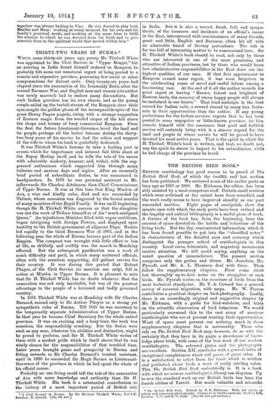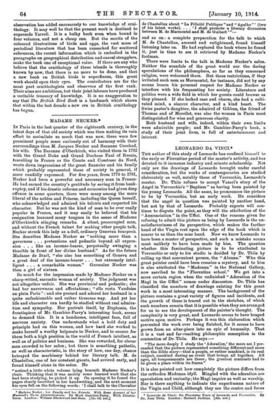THE BRITISH BIRD BOOK.*
BRITISH ornithology has good reason to be proud of Floor British Bird Book, of which the twelfth and last section has been published. We reviewed some of the earlier parts as long ago as 1907 or 1908. Mr. Kirkman, the editor, has been ably assisted by a most competent staff. Certain small matters which were criticised at the outset have been remedied, and the work really seems to have improved steadily as one part succeeded another. Eight pages of corrigenda show the minute care with which the early parts have been revised, and the lengthy and critical bibliography is a useful piece of work. A feature of the book has, from the beginning, been the amount of space devoted to the habits and behaviour of the living birds. But the dry, concentrated information which it has been found possible to put into the "classified notes" is characteristic of the detailed care and accuracy which distinguish the younger school of ornithologists in this country. Local races, trinomials, and migratory movements receive attention. We will avoid saying anything on the vexed question of nomenclature. The present section comprises only the grebes and divers. Mr. Jourdain, Mr. Pycraft, and Mr. A. L. Thomson deal with them. Then follow the supplementary chapters. First come short but thoroughly up-to-date notes on the stragglers or rare birds. Mr. Pycraft writes on the structure of birds from the moat technical standpoint. Mr. T. A. Coward bee a general survey of seasonal migration, with maps. Mr. W. Farren contributes a practical chapter on bird-photography. Lastly, there is an exceedingly original and suggestive chapter by Mr. Kirkman, with a guide for bird-watchers, and hints on the scientific observation of bird behaviour. We would particularly commend this to the vast army of amateur ornithologists who are at present wasting their opportunities. Want of space must prevent our noticing much in these supplementary chapters that is noteworthy. Those who rely on The British Bird Book may, however, do so with the certainty that they have in its pages a storehouse of know- ledge about birds, with some of the best work of our modern ornithologists. The coloured plates and the photographs are excellent. Section XII. concludes with a general index of exceptional completeness which will prove of great value. It is a satisfaction to select from the trash which is written and published about birds a work of really sterling value. This The British Bird Book undoubtedly is. It is a book with which no serious ornithologist's library can dispense. Up to now the standard work on our British birds has been the fourth edition of Yarrell. But much valuable and scientific • The British Bird Book. Edited by F. B. Kirkman. With 20D plates in colour aid numerous photographs. Complete in twelve sections. Section X.He London : T. C. and E. C. Jack. [10s. 6d. net per motion.] observation has added enormously to our knowledge of orni- thology. It may well be that the present work is destined to supersede Yarrell. It is a bulky book even when bound in four volumes, and not a cheap one. But the merits of the coloured illustrations of birds and eggs, the vast mass of periodical literature that has been ransacked for scattered references, the recent information which is embodied in the paragraphs on geographical distribution and casual stragglers, make the book one of exceptional value. If there are any who believe that the ornithology of these islands is thoroughly known by now, that there is no more to be done, and that a new book on British birds is superfluous, this great work should open their eyes. The contributors are for the most part ornithologists and observers of the first rank. Their aims are ambitious, but their joint labours have produced a veritable treasury of knowledge. It is no exaggeration to say that The British Bird Book is a landmark which shows that within the last decade a new era in British ornithology has begun.







































 Previous page
Previous page